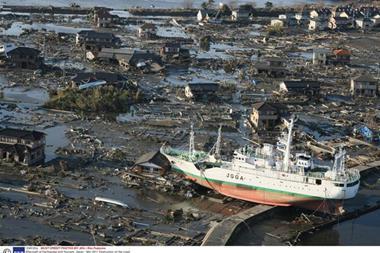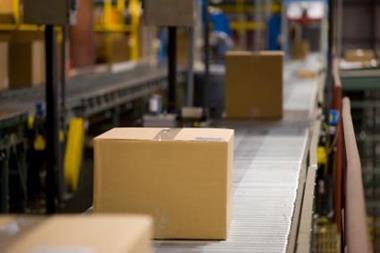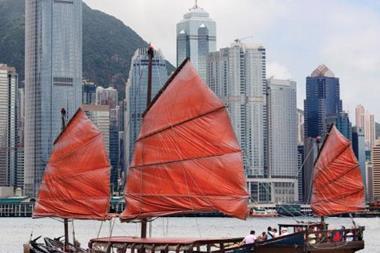As companies' reporting requirements become more stringent, the likelihood of product recalls increases. But how do you ensure a robust crisis management system?
The number of notifications of potentially dangerous products distributed in the EU for both general consumer products, notified through the Rapid Alert System for non-food consumer products (RAPEX) website, and for food and feed products (notified through the Rapid Alert System for Food and Feed (RASFF), rose yet again in 2009. Does this mean that there are more dangerous products on the market and that the number of product recalls is also increasing?
Patrick Amschwand, Zurich Global Corporate’s chief underwriting officer for Europe and the Middle East, thinks not. “In the years following the enactment of the 2001 EU product safety directives in the different member states, we have seen tighter and more complex legislation surrounding product safety in the EU. Companies are making notifications in circumstances that they would not have previously reported. There is an underlying change in the legal framework that has driven more reporting and pushed the numbers up.”
Globalisation adds risk
However, Amschwand accepts that some changes in the way goods are produced have created more risk challenges. “We’ve seen significant globalisation, with companies moving production from their home countries to cheaper labour markets in countries
like China and India, and also looking to export to developing areas. The drive to increase margins and reduce costs is putting additional pressure on product safety risk management procedures at a time when manufacturing processes are becoming more complicated.”
Another feature of globalisation is the prevalence of extended and complicated supply chains. Amschwand explains: “This makes the challenge of quality assurance and product safety more testing and the control of contractual terms and conditions through this extended supply chain more challenging. There’s more room now for risk being introduced.”
Not all recent trends, however, have increased the likelihood of product defects creeping in. The growth in technology and ever-improving automation in production and testing processes is helping to remove risk, with less scope for human error.
Whether products have become riskier or the growth in statistics is the result of more stringent reporting requirements, it is clear that some companies are not as well prepared for a potential product recall as they might be. As Amschwand says, it isn’t cost effective to prepare for absolutely every risk event. Companies have to take a view on what represents reasonable and appropriate contingency planning and preparation. However, companies tend to underestimate the impact of a recall on their business and brand.
It is a challenge for a company to quantify its estimated maximum financial loss from a recall for a number of reasons.
Amschwand explains: “It is difficult to quantify the damage that may be sustained by a brand and how long it will take before customers are willing to return following a breach in product safety controls. Often, too, there are very complicated contractual chains which make the allocation of financial risk [to the various parties in the supply chain] hard to assess.
“Furthermore, companies don’t always identify the interdependencies between production lines. If one plant is shut down while an investigation into a product contamination is under way, how much of that production can be switched to an alternative site? Assessing business interruption is probably the most difficult aspect.
“Significant underestimation of a potential loss from a recall – and of the likelihood of a recall happening – can give companies a false sense of security. As a result, they may not prioritise prevention, planning and preparation as they would if they realised the true scale of the possible loss. For this reason, a key feature of Zurich Global Corporate’s product recall cover is access to consultants to help clients make the right decisions and provisions for pre-loss risk improvement.”
Minimising the dangers
Good quality management is key to reducing the likelihood of a recall. This includes effective product safety controls, personnel training, auditing suppliers, and rigorous testing processes at all stages of product development, design and production.
Minimising the potential consequential costs if a product recall does become necessary involves additional strategies.
For example, Amschwand recognises the need for companies to establish rigorous contractual controls, such as contracts with suppliers that ensure they can pass the risk back if a supplier’s ingredients or components have caused the problem. “We still see companies signing hold harmless agreements with suppliers that mean they may not have any legal recourse against them,” he says.
Limiting batch sizes and swift identification of the defective products are also key. Lars Simpelkamp, risk engineer at Zurich Global Corporate Germany, points out that there’s a big cost difference between withdrawing 1,000 or 100,000 products. “If companies reduce the quantities in each batch, they can identify affected products more easily and limit the impact. This can often be done quite cheaply, using electronic data processing (EDP) systems.” Keeping back a sample from each batch also saves time if a product needs to be tested when a company is deciding whether a recall is necessary.
Where a product consists of a number of components, a company should ensure that it can identify each component. If a complex mechanical product is involved, each part will usually have its own ID number, but dismantling the product to check identification
is time-consuming and expensive. Simpelkamp says that attaching radio frequency identification tags to components helps here, allowing each part to be identified at a distance of around two metres. It’s easy to see how useful this is when, say, checking a number of products stored in a warehouse or in locations where access is difficult.
Companies manufacturing huge quantities of fairly simple cheap items, such as plastic toys, need to employ different identification and limitation strategies, says Simpelkamp.
“If a company is using raw materials such as plastics or metals, each time it changes the batch or source of the raw material, it could identify the change in the EDP system,” he suggests.
Paul Howard, head of insurance and risk management at Sainsbury’s, agrees that batch numbers, order tracking and product tracking are essential. Businesses selling direct to the public may also benefit from their use of loyalty cards, he says. “Loyalty card data – customers’ names and addresses – can be valuable in identifying a high percentage of the people who have bought a particular product, rather than relying on advertisements and notifications.”
Work with suppliers
Howard stresses the need to work in partnership with suppliers on any product and packaging changes. “You need to be aware of their contingency plans and processes as well as their operations. It’s a partnership approach to ensure anything relevant is flagged up before a potential loss.”
Last year’s RAPEX notifications highlighted China as by far the largest source of defective and potentially dangerous products. However, Simpelkamp resists the implication that sourcing manufacturers in China is necessarily hazardous. “There are some market-leading companies in terms of quality producing in China and some not so good companies in Europe. The important thing is for a company to ensure that all its production areas around the world have consistent standards of quality and controls, including testing and reporting procedures,” he says.
He warns that companies who push their suppliers to agree to very low prices might need to do more in terms of ensuring quality control as those suppliers may try to cut corners, for example using cheaper materials than those specified. “This is, of course, dangerous for product quality. The company that is bringing the product into the market must carry out proper investigations of its suppliers and similarly test any outsourced components before integrating them into the product,” he adds.
Make plans and stick to them
A properly pre-prepared robust crisis management plan and an established recall management team are essential. The team must have the training, the knowledge and the data to act immediately and in a well co-ordinated manner, says Simpelkamp.
Management must also be able to communicate effectively with the media and other stakeholders. Amschwand suggests getting communications prepared in advance. “Do not wait until a recall happens to start drafting messages to go to your trading partners. Legislation requires you to act immediately and it is not likely that you will have a clear picture of the full circumstances before you are obliged to make some kind of comment to the local government agencies, customers or maybe the media.” Howard points to the need to be as transparent and open as possible – and to communicate widely.
Simpelkamp also stresses that acting quickly is crucial. “It’s important not to lose two days thinking about what you need to do and how, which is why prior training and testing against recall scenarios are vital.”
The crisis plan and communication procedures should reflect the company’s potential exposure and the affected product’s complexities, for instance taking into account geographical distribution and any specific handling and storage requirements. Simpelkamp gives the example of a product that is temperature sensitive and has to be kept in a chilled environment: “The company will need to be able to access special warehouses and transport facilities very quickly.”
Ian Harrison, executive director of Lockton’s global risks team, stresses the need for companies to stick to the crisis plans that they have established. “In practice, many times they do not follow the plans that they’ve laid out for themselves, probably because of media and time pressures. Events can often overtake them. But following the logical processes that they designed before the crisis will generally still serve them well.”
Harrison also advocates using any crisis management hotlines that may be provided within the applicable product recall policy. “The advice these give can be very valuable.”
Amschwand concludes: “All companies recognise that they cannot completely eradicate any chance of a product safety issue arising. However, they can ensure that they reduce the potential impact.”
Key points
- Tighter and more complex product safety legislation has driven up numbers of recalls
- Many businesses underestimate the damage a recall can do to their brand
- Put together a robust crisis plan and draft statements ready in advance
Hosted by comedian and actor Tom Allen, 34 Gold, 23 Silver and 22 Bronze awards were handed out across an amazing 34 categories recognising brilliance and innovation right across the breadth of UK general insurance.












































